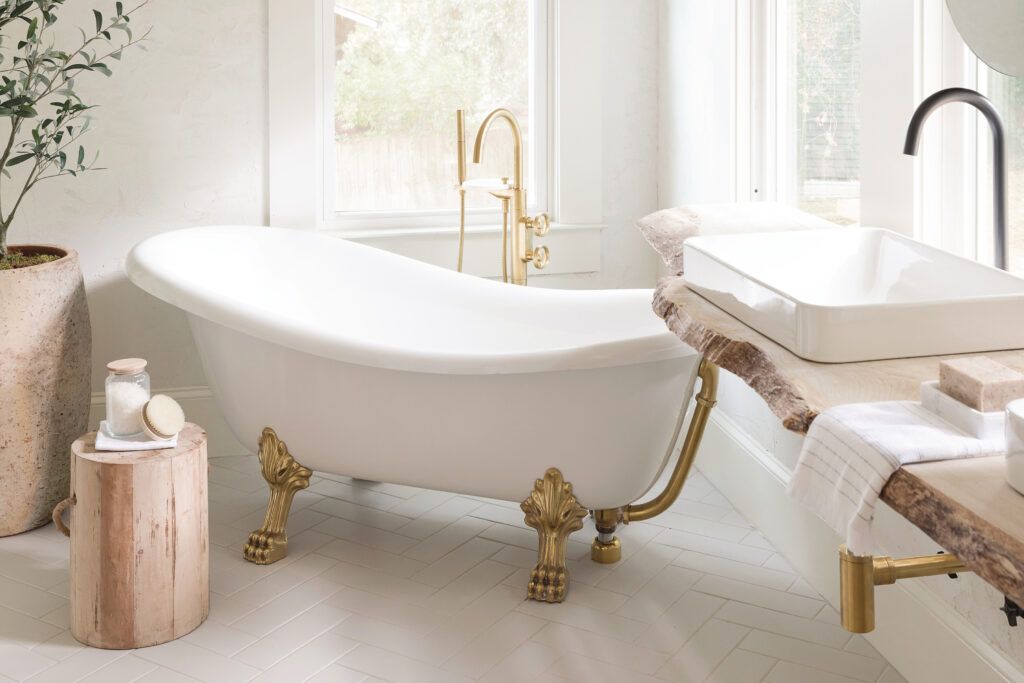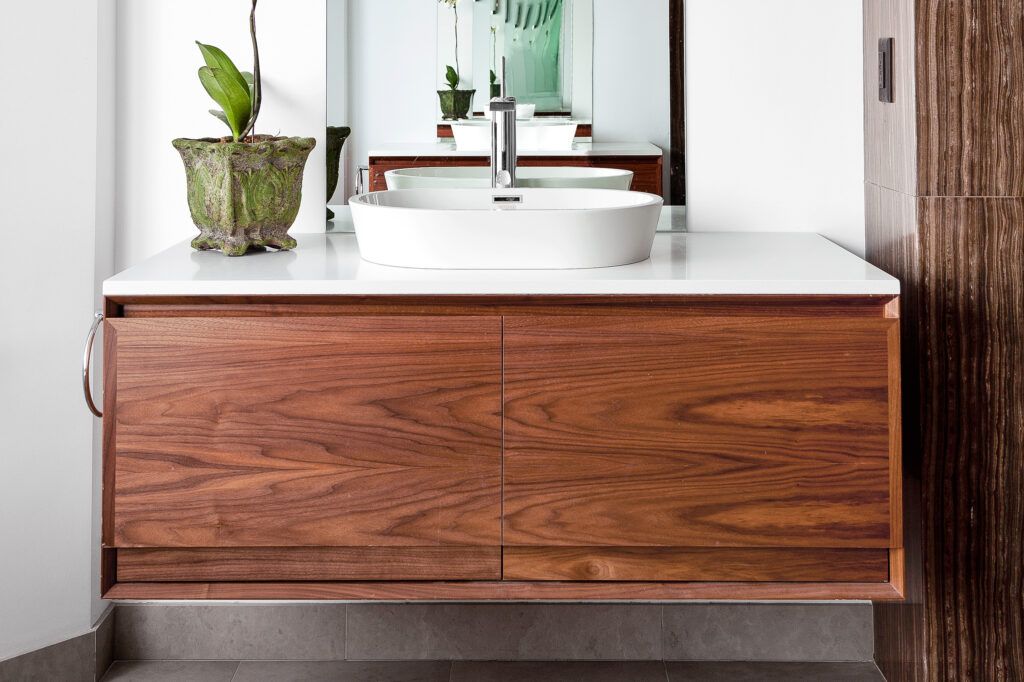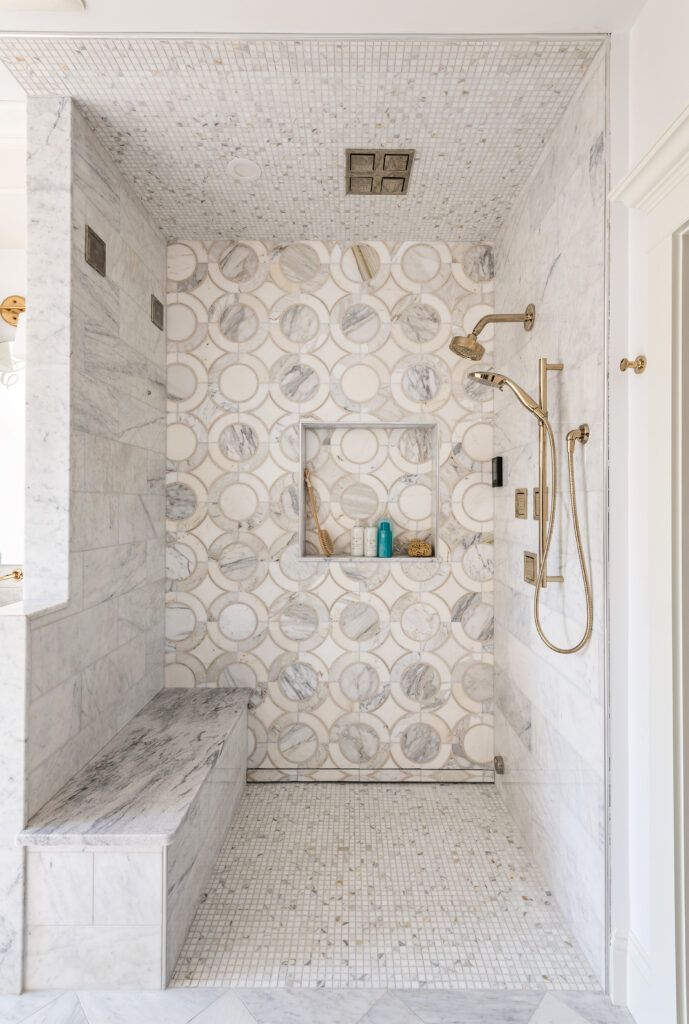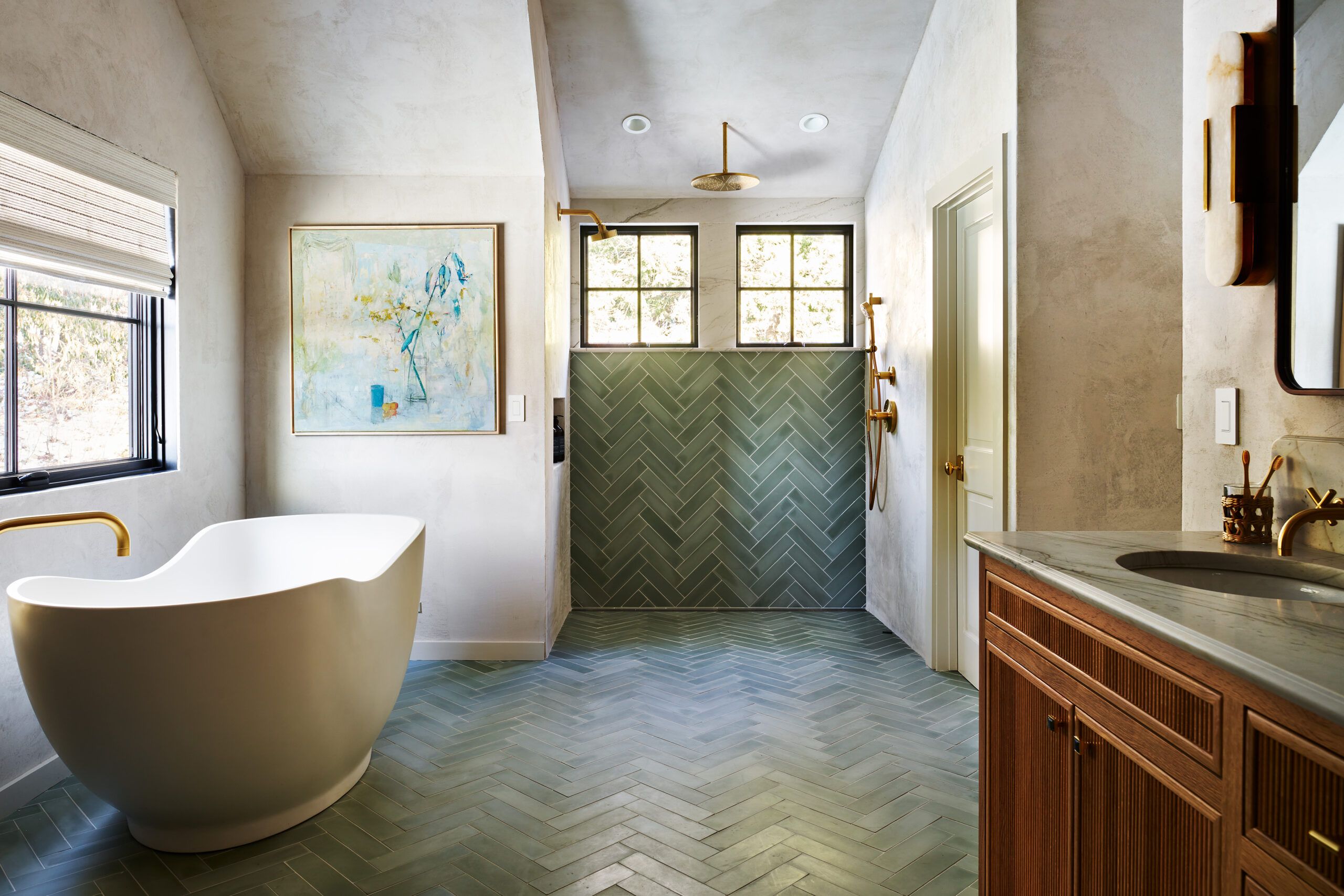Bathroom design trends are constantly evolving, offering homeowners exciting ways to refresh their spaces. In recent years, we’re seeing a focus on luxurious, spa-like bathrooms that blend function with style.
This article explores three popular bathroom design ideas that are making waves in the industry: freestanding tubs, floating vanities, and curbless showers. We’ll overview their benefits and considerations when installing them.
Freestanding Tub

Freestanding tubs have become a staple in modern bathroom design, offering a striking focal point and luxurious bathing experience. You can opt for something sleek and modern with clean lines or a more vintage-inspired clawfoot tub.
Regardless of the style, there are a few factors to think about before committing to a freestanding tub. One of the primary concerns when installing a freestanding tub is its weight. Once filled with water and occupied by a bather, these tubs can easily weigh up to 500 pounds, putting significant strain on the floor beneath. You can reinforce the flooring structure by sistering the joists or doubling up a subfloor of 3/4-inch plywood under a pedestal or one-piece tub. Tom Silva of This Old House recommends an even more robust approach: laying 2x material flat between joists and supporting it with cleats under the legs.
Also, consider plumbing placement. A floor-mount tub filler offers flexibility when choosing where to put the tub, but a wall-mount or deck-mount faucet might be more practical and cost-effective in preexisting layouts.
Lastly, don’t overlook your home’s water heating capacity. A large soaking tub may require more hot water than your current system can handle, in which case you’ll need to upgrade your water heater for a truly luxurious experience.
Floating Vanity

Floating vanities have a sleek, modern appearance that can make a bathroom seem more spacious by creating an illusion of more floor space. These vanities also make cleaning the bathroom floor easier since there’s no base to work around. Consider a minimalist design with clean lines for a contemporary feel, or add texture and warmth with wood finishes for a more organic, spa-like atmosphere. You can customize them further with hardware or under-cabinet lighting, adding a sophisticated touch and providing soft lighting for nighttime use.
Note that installing a floating vanity is more complex than traditional floor-mounted models. For example, you’ll need to order enough flooring to cover the visible space beneath the cabinet to ensure a cohesive look. You’ll also need blocking behind the walls to support the vanity’s extra weight, especially when it’s paired with a heavy countertop material, such as stone. Silva recommends adding 6-by-6-inch steel L-brackets for additional support.
If the plumbing currently comes out of the floor, it will need to be roughed into the wall behind the vanity. This can be straightforward for interior walls. However, for exterior walls in cold climates, you’ll need to take special precautions to prevent frozen pipes. In these cases, keep the pipes tight to the wall and create a boxed-out surround, painted to match the wall color, to conceal and protect them.
Curbless Shower

Curbless showers, also known as zero-entry showers, eliminate the traditional threshold and create a seamless transition from the bathroom floor to the shower area. This design looks modern and streamlined look while improving accessibility, offering a safer, more convenient bathing experience for those who are aging or experiencing mobility issues.
The key to a successful curbless shower installation is proper floor pitch and drainage. Whether you opt for a center drain or a linear one positioned off to the side, getting the floor slope right is crucial to prevent water from pooling or seeping out under the door. Silva recommends a quarter- to half-inch pitch over four feet or less. You may need to build up the entire bathroom floor first to allow for the necessary slope. Also make sure the drain sits lower than the tile.
A tile-ready, preformed shower pan helps simplify the installation while ensuring proper drainage. These pans come with the correct slope built-in, taking away much of the guesswork. However, it’s still critical to make sure the drain sits lower than the tile to facilitate proper water flow.
Safety should be a top priority when selecting tile for a curbless shower. A wet shower floor can be slippery even wtih proper drainage. Look for small for matte, honed, or textured tiles for the best traction. Small tiles and more grout lines help increase grip underfoot. Consider using the same tile throughout the bathroom floor and shower area to create a cohesive look.

